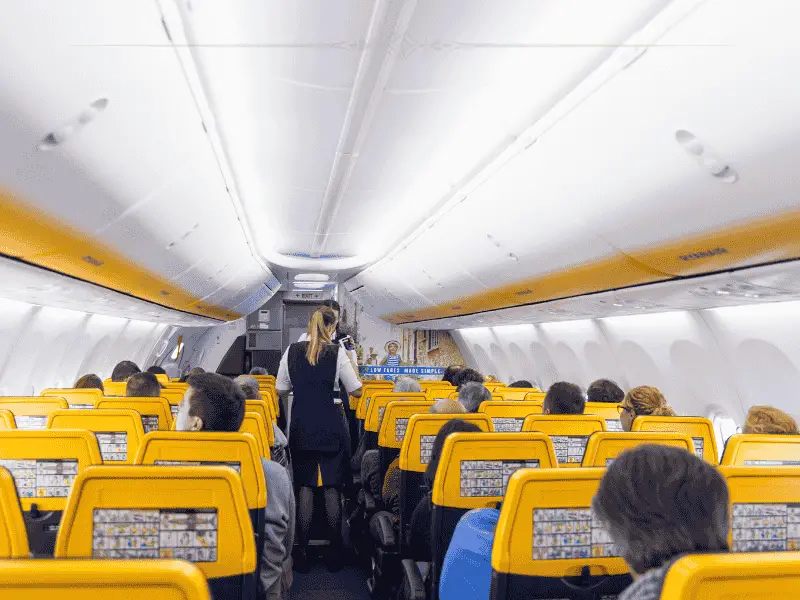In a bold move that signals a significant shift in the aviation industry’s approach to passenger services, Europe’s largest low-cost carrier, has announced the complete elimination of airport check-in counters and paper tickets by May 2025. This dramatic transformation of the traditional airport experience represents one of the most significant changes in the airline’s operational model since its inception.

The transformation of Ryanair’s check-in process marks a decisive step toward complete digitalization in the aviation sector. The airline’s decision to remove all physical check-in counters from airports across its network reflects a broader industry trend toward streamlined, digital-first operations. This change will affect millions of passengers across hundreds of routes throughout Europe and beyond.
The decision to eliminate airport counters is rooted in Ryanair’s continued focus on cost optimization and operational efficiency. The airline currently outsources its ground operations to third-party handling companies and pays substantial fees to airports for counter space. By removing these physical touchpoints, the carrier aims to significantly reduce operational costs, which it claims will help maintain its competitive pricing strategy.
Impact on Passenger Experience
The elimination of airport counters represents a fundamental change in how passengers will interact with the airline. The transition means that all check-in procedures will need to be completed online before arrival at the airport. This shift builds upon the airline’s existing policy, which has long encouraged digital check-in through its fee structure, charging substantial premiums for airport check-in services.
To support this significant operational change, Ryanair has invested heavily in its digital infrastructure. The airline’s mobile app and website will become the primary interfaces for all passenger services, from booking to boarding. These platforms will need to handle increased traffic and provide robust support for all passenger needs, including last-minute changes and special requirements.
Addressing Accessibility Concerns
The move to a fully digital system raises important questions about accessibility and passenger support. The airline will need to establish clear protocols for assisting passengers who may face challenges with digital technology, including elderly travelers, those with disabilities, and individuals who may not have reliable internet access. The success of this initiative will largely depend on how effectively these concerns are addressed.
The financial implications of this change extend beyond the immediate cost savings from eliminating physical infrastructure. The move is expected to reduce staffing requirements, minimize airport rental costs, and streamline operations. However, the airline will need to invest in enhanced digital capabilities and customer support systems to ensure smooth implementation.
This initiative positions Ryanair at the forefront of aviation industry digitalization. While other airlines have increasingly emphasized digital services, none have yet taken the step of completely eliminating physical check-in facilities. This move could set a precedent for other carriers, particularly in the low-cost sector, potentially reshaping airport operations across the industry.
The transition will require careful coordination with airports and handling partners. New processes will need to be established for managing exceptional circumstances, such as system outages or emergency situations. The airline will need to ensure that its digital infrastructure is robust enough to handle peak travel periods and maintain service continuity.
While the elimination of check-in counters will reduce certain staffing needs, the airline will need to focus on retraining and redeploying personnel to support its enhanced digital operations. This includes strengthening remote customer service teams and developing new roles to support the digital infrastructure.
The success of this initiative will largely depend on passenger adaptation to the new system. While many travelers, particularly younger demographics, may welcome the fully digital approach, others may find the transition challenging. The airline’s ability to manage this change while maintaining customer satisfaction will be crucial.
The elimination of paper tickets and physical infrastructure aligns with growing environmental consciousness in the aviation industry. This digital transformation could contribute to reduced paper waste and lower energy consumption at airport facilities, though the environmental impact of increased digital infrastructure must also be considered.
In conclusion, Ryanair’s decision to eliminate airport counters represents a significant milestone in aviation history. This bold move toward complete digitalization reflects broader trends in the industry and society at large. The success of this initiative will depend on the airline’s ability to implement robust digital systems, address accessibility concerns, and maintain high levels of customer service. As the aviation industry continues to evolve, this change may well serve as a model for other carriers considering similar transformations in their operations.




